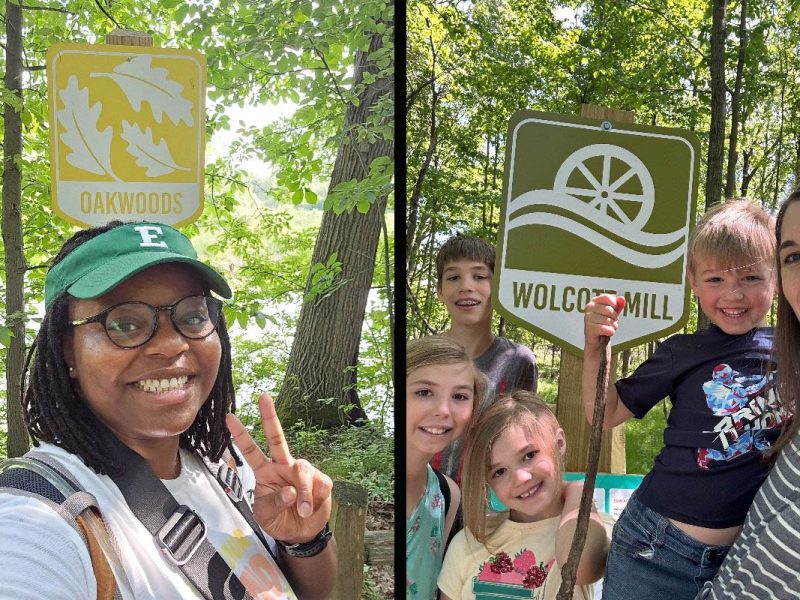Art as protest: How Sydney James and her team of artists created the Malice Green mural in a week
Victims of police killings are often criminalized. For Sydney G. James, there is no justification. So she decided to use her art to be a voice for her disgust at yet another slaying of a Black person at the hands of those hired to protect and serve them.
Sydney G. James had a dream.
Well, it was more of a vision.
As she watched coverage of yet another police killing, she was reminded of the infamous murder of Malice Green, who was killed by four Detroit police officers in November of 1992, a year after the police beating of Rodney King. For James, watching the recent coverage of the killings of George Floyd, Ahmaud Arbery, and Breonna Taylor brought back memories.
“I was 13 when Malice Green got murdered,” James recalls. “I remember the headlines and him being referred to as a ‘crackhead.’ Those words and description criminalizing the victim play a part in how you grieve.”
Victims of police killings are often criminalized. Their history and life are put on trial to offer some justification of why they died at the hands of law enforcement. For James, an internationally acclaimed artist and model, there is no justification.
She decided to use her art to be a voice for her disgust at yet another slaying of a Black person at the hands of those hired to protect and serve them. She decided to paint a new mural of Malice Green.
“I’m tired. WE’RE TIRED!,” she wrote in a Facebook post. “I remember when Bennie White’s mural of Malice Green panned across my tv screen on the news. I knew then, even at the young age of 13, he was a symbol. He was the symbol of the injustices and mistreatment of Black and Brown people in this country dating back centuries.”
The original mural was located near the site where Green died on Warren Avenue and 23rd Street. The mural and the building it was painted on were demolished in 2013 after decades of serving as a shrine to the fallen man’s life.
“The Black tears that flowed from (Green’s) eyes was an outcry of all the black tears around the world. Police brutality is at an all-time high. WE ARE TIRED! And we need our symbol present,” James posted on Facebook.
“As soon as I read that the original mural was demolished, I knew that I had to paint for him,” James says. “It kind of hurt my heart, because that isn’t what I really do. And dealing with the coronavirus pandemic was already challenging. My family was impacted, and grief can make you feel very insecure.”
“As soon as I reached out to a few people, I got the support I needed,” she says. In just hours, the GoFundMe page that James created was fully funded. It has since far exceeded its $10,000 goal, raising nearly $19,000 before donations were disabled on the campaign page.
“We are dealing with two pandemics,” she says. “One of them has always been here, but now people have the time and space to see it.”
James says that she believes that the coronavirus pandemic and the rise of police killings have created a deeper bond for African Americans. “I don’t believe we are all bound by injustice. I just believe we are all bound. Whether we know each other or not, we are bound,” she says. “I feel like that’s part of the beauty of Blackness.”
That bond became part of her motivation to recreate the mural.
Her mural, located on the side of the Hamilton Tucker Art Gallery where she is a co-owner, was created by James with the assistance of her mentees, the “league of Misfit Art Loves,” including Ijania Cortez, Cyrah Dardas, Bakpak Durden. “I have access to this wall,” she says, “It’s large and it’s mine.”
She says that ownership means that because the original mural was demolished against the wishes of the community, this time they will have the final say.
“I think the people of Highland Park are happy to have it in their community,” James says, “there were people who would just come past or come and sit and watch us paint. While it’s extremely sad, it’s also beautiful. It’s oxymoronic. It’s aesthetically beautiful, but it’s also extremely ugly.”
James says the family of Malice Green reached out to her after hearing of the GoFundMe. She spoke to his sister, niece, and nephew. “I learned that he loved to fish, that he was a strong man, he was a fighter,” she says. “I learned that he once grabbed a snake by his bare hands. And he loved to dress well. Hearing those stories. These are people. Every name on that mural was a person. They were somebody’s family member. They were people. They were human.”
“I had support from friends with painting the names,” she says, that because there is no real database that holds all of the names. She felt challenged in deciding what names to choose. It doesn’t exist. “We were barely able to touch the surface,” she said.
When Dardas, one of the artists who helped create the mural, stepped back, she felt “astounded” at the collective effort, which took only five days. “While working on it, I was overwhelmed at the amount of stories of human lives that have been affected and destroyed by the police,” Dardas says. “I tried to read the story of every person’s name that I wrote on the wall, [and] it was extremely difficult. … Sydney had originally wanted to include all the names of folks who had died in her lifetime but we could barely get through a few years’ worth of names plus the folks who had made major headlines without running out of space. It’s an extremely devastating reality.”
Dardas’ partner, Bakpak Durden, was also overwhelmed by the tragedy that the wall represents.
“When Cyrah and I were working on the top section of the scroll together and when we made it to the newspaper clippings, that’s when I felt the weight of this project the most,” Durden says. “While I was painting the names in the [newspaper] clippings, I just started picturing the worst for each of us in the crew. And it played over and over again in my head. Each of the names of those recently murdered, directly correlate to all of us. So when I finished Tony [McDade]’s name, I just broke down and we all had to call it a day.”
While emotionally exhausting, the project underscores the importance to show up as a community, Durden says.
It’s also significant that it’s in the City of Detroit, Dardas says. “Having a monument like this in Detroit is particularly impactful and important. Because of this demographic, the city’s experience of policing has been unhelpful, dangerous, and lethal. Hopefully this mural can create a space that the community can use to process grief caused by this reality.”
James says that for her and her mentees, the weeklong process of painting the mural was emotionally and physically taxing. “There were moments when we would just sit down and cry,” she says. “It was an exhausting and rewarding process.”
From 3-6 p.m. on Juneteenth (Friday, June 19) the public is invited to view the mural and offer flowers at the official unveiling “Way Too Many” at 16065 Hamilton Ave. in Highland Park.








